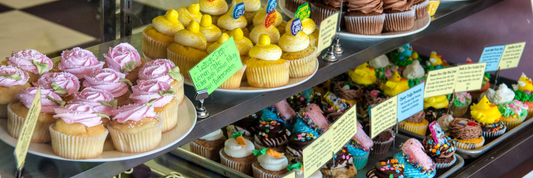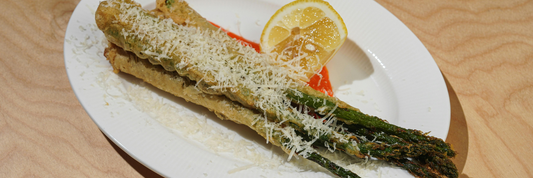In today’s competitive F&B landscape, restaurants are no longer judged by food alone they are discovered, remembered, and chosen through their online presence. Yet many owners struggle with irregular posting, repeating ideas, or simply running out of time. A well-structured 30-day social media calendar solves these challenges by bringing clarity, consistency, and intention to your marketing.
For restaurants embracing sustainability, this becomes even more meaningful. With support from the Kimecopak Membership Program, businesses can strengthen their brand story through eco-friendly packaging, preferred pricing, and resources that make content creation easier and more authentic.
A thoughtful calendar doesn’t just help you post — it helps you connect, engage, and grow.
- How to Create Engaging Social Media Posts for Your Restaurant
-
Content Ideas: 10 Social Media Posts to Boost Engagement for Restaurants
-
3 Effective Facebook Ad Examples for Small Shops
What Is a Social Media Calendar for Restaurants?

A social media calendar is simply a structured plan outlining what your restaurant will post and when. Instead of improvising day by day, you work with a clear strategy built around your brand identity, customer preferences, and marketing goals.
Why it matters:
-
Ensures consistent brand presence
-
Helps portray your restaurant in a polished, professional way
-
Improves storytelling and customer connection
-
Supports promotional campaigns
-
Saves time and reduces stress
-
Allows you to track results more clearly
In an industry where customers make decisions visually and emotionally, planning content in advance is a measurable advantage.
Benefits of a 30-Day Restaurant Social Media Calendar

1. Consistent Posting Without Burnout
According to Sprout Social, brands that maintain regular posting schedules see up to 2x higher engagement compared to inconsistent accounts.
This consistency builds trust. Customers begin to expect your content — and that expectation builds loyalty.
2. Stronger Brand Identity Across Platforms
Your visuals, captions, and messaging become aligned. Whether a customer sees you on Instagram, Facebook, or TikTok, they recognize your story.
3. Better Time Management
With a planned calendar:
-
You batch-create photos/videos
-
You schedule posts weekly
-
You reduce last-minute panic
4. Data-Driven Improvement
A structured calendar allows you to track performance and refine your content every month.
Step-by-Step Guide to Planning 30 Days of Restaurant Posts

Step 1 — Define Your Goals
Every restaurant’s goal differs slightly:
-
Boost reservations
-
Increase online orders
-
Build awareness of new menu items
-
Strengthen brand identity
Your calendar should support these goals directly.
Step 2 — Understand Your Audience
Identify:
-
Who they are (families, professionals, students, tourists)
-
What they love (signature dishes, seasonal menus, chef stories)
-
When they’re online (lunchtime, evening, weekends)
Use polls and analytics tools to refine this understanding over time.
Step 3 — Choose Your Platforms
| Platform | Strength | Best For |
|---|---|---|
| Visual storytelling | Menus, behind-the-scenes, chef features | |
| Local reach | Events, promotions, reviews | |
| TikTok | Short-form trends | Reels, kitchen hacks, viral dishes |
| Google Business Profile | Search visibility | Photos, updates, reviews |
(Source: HubSpot Social Media Trends Report 2024)
Step 4 — Build Your 30-Day Content Themes
Here are content pillars that work exceptionally well for restaurants:
-
Menu Highlights
-
Chef Stories & Kitchen Insights
-
Sustainability & Packaging Choices
-
Customer Testimonials
-
UGC (User-Generated Content)
-
Promotions & Seasonal Specials
-
Behind-the-Scenes Operations
-
Community Engagement
Sustainability is increasingly important. Customers want transparency especially about how their food is packaged. This is where joining the Kimecopak Membership Program allows restaurants to feature eco-friendly packaging consistently in their content.
Learn more here: https://www.kimecopak.ca/pages/membership
Step 5 — Structure a Balanced Weekly Mix
A simple weekly framework:
-
2 food-focused posts
-
1 behind-the-scenes
-
1 customer review
-
1 sustainability or brand story
-
1 reel (trend or educational)
-
1 promotional post
This balance keeps content fresh while reinforcing what makes your restaurant special.
Step 6 — Gather and Organize Your Assets
Before the month starts, prepare:
-
Food photos
-
Kitchen clips
-
Staff portraits
-
Sustainability shots (packaging, compostables, etc.)
-
Customer testimonials
-
Promo banners
Use folders and naming conventions to keep assets organized.
Step 7 — Write Captions That Convert
A great caption is:
-
Clear
-
Engaging
-
Emotional
-
Action-oriented
Examples of effective caption formats:
-
“Ever wondered how we prepare our signature dish?”
-
“A new week, a new flavor to fall in love with.”
-
“Here’s a closer look at how we reduce waste every day.”
Step 8 — Schedule Posts & Automate Publishing
Top scheduling tools:
-
Meta Business Suite
-
Buffer
-
Later
-
Hootsuite
Best posting times for restaurants:
According to HubSpot 2024, restaurant content performs well:
-
11 AM – 1 PM (before lunch)
-
5 PM – 7 PM (before dinner)
-
Weekends
Complete 30-Day Restaurant Social Media Calendar Template

Week 1 — Foundation & Brand Storytelling
-
Day 1: Introduction to your restaurant
-
Day 2: Signature dish spotlight
-
Day 3: Why customers love your brand
-
Day 4: Meet the chef
-
Day 5: Behind-the-scenes prep
-
Day 6: Sustainability story
-
Day 7: Weekend special
Week 2 — Menu Highlights & Social Proof
-
Day 8: New dish or seasonal item
-
Day 9: Customer review
-
Day 10: UGC repost
-
Day 11: Ingredient spotlight
-
Day 12: Reels — plating process
-
Day 13: Promo day
-
Day 14: Comfort food feature
Week 3 — Engagement Boosters & Community Connection
-
Day 15: Poll (customer preferences)
-
Day 16: Chef tip
-
Day 17: Staff highlight
-
Day 18: Pantry organization
-
Day 19: Community partnership
-
Day 20: Behind-the-scenes weekend prep
-
Day 21: Sunday recap
Week 4 — Promotions, Sustainability & Final Week Push
-
Day 22: Loyalty promo
-
Day 23: Sustainability deep-dive
-
Day 24: Kitchen moment reel
-
Day 25: Customer favorite
-
Day 26: New dessert or drink
-
Day 27: Weekly highlight carousel
-
Day 28: Monthly reflection
-
Day 29: Top 5 dishes
-
Day 30: Final CTA — visit or order
Restaurant Content Ideas That Always Work
High-performing formats:
-
Reels
-
Carousels
-
Overhead shots
-
Chef-led educational videos
Strong hook examples:
-
“Here’s the dish that customers keep requesting…”
-
“A moment from our kitchen today…”
-
“You asked, we listened — here’s our newest creation.”
How to Track Performance & Adjust Your Calendar

Key Metrics:
-
Reach & impressions
-
Engagement rate
-
Saves & shares
-
Profile visits
-
Click-through to website
-
Reservation or order conversions
Monthly Review Checklist
-
What worked best?
-
What underperformed?
-
Which dishes gained traction?
-
Did sustainability content resonate?
-
What do customers want more of?
Conclusion
A structured 30-day social media calendar can completely change how customers perceive your restaurant. Instead of posting randomly, you build a recognizable identity, tell your story with intention, and create meaningful touchpoints with your audience.
The key is consistency — not perfection. Start with the framework, adapt it to your style, and refine it month by month.
For restaurants looking to strengthen both branding and sustainability, joining the Kimecopak Membership Program is a powerful step toward long-term success.
Your next 30 days can reshape your online presence and your business.
FAQ
How do I create a social media content plan for a restaurant?
Define goals, understand your audience, choose platforms, outline your content themes, prepare your assets, write captions, and schedule posts.
How often should restaurants post on social media?
A consistent frequency of 3–5 posts per week is recommended.
What types of posts work best for restaurants?
Food photography, chef features, customer reviews, behind-the-scenes, and sustainability stories.
How far in advance should I plan my social media calendar?
A 30-day plan offers a good balance of structure and flexibility.
How can restaurants increase engagement on social media?
Post consistently, offer value, tell authentic stories, highlight sustainability, and respond to customers promptly.
-
LEARN MORE about How "Subscribe for a Happy Life" will benefits your business HERE!
-
LEARN MORE about Kim Vu, sharing on the challenges she faced as a former restaurant owner, and how she overcame them to create KimEcopak HERE!




